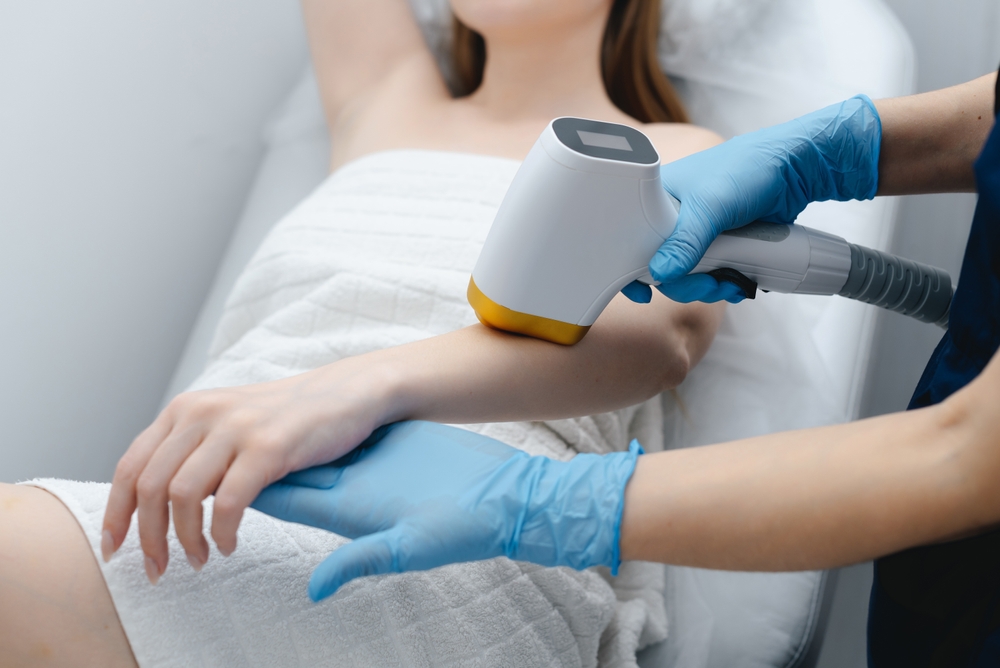Understanding lip hyperpigmentation laser treatment
In 2025, laser treatments are increasingly used in dermatology to address uneven skin tone, including pigmentation on the lips. Lip hyperpigmentation can occur from sun exposure, hormonal changes, or lifestyle factors, and laser therapy offers one of several clinical approaches to improving color balance. This guide explores how lip hyperpigmentation laser treatment works, what to expect during the process, and important safety considerations to discuss with a qualified dermatologist.

Lip hyperpigmentation can occur due to various factors including sun exposure, hormonal changes, smoking, certain medications, or genetic predisposition. While this condition is generally harmless from a medical standpoint, many people seek treatment to restore a more even tone to their lips. Laser therapy has become an increasingly popular option for those looking to address this aesthetic concern through advanced dermatological technology.
What Is Lip Hyperpigmentation?
Lip hyperpigmentation refers to the darkening of the lip tissue beyond its natural color, resulting in patches or an overall darker appearance. This occurs when melanocytes, the cells responsible for producing melanin, become overactive in certain areas. The condition can affect the upper lip, lower lip, or both, and may appear as spots, patches, or uniform darkening. Common causes include prolonged sun exposure without protection, friction from habits like licking lips, inflammatory conditions, or reactions to cosmetic products. Some individuals are more prone to developing hyperpigmentation due to their skin type or ethnic background. Understanding the underlying cause helps determine the most appropriate treatment approach and whether laser therapy is suitable.
How Laser Treatment Works
Laser treatment for lip hyperpigmentation utilizes focused light energy to target excess melanin in the skin. The laser emits specific wavelengths that are absorbed by the darker pigmented areas while leaving surrounding tissue largely unaffected. This selective targeting causes the melanin to break down into smaller particles that the body can naturally eliminate through its lymphatic system. Different types of lasers may be used depending on the severity and depth of pigmentation, including Q-switched lasers, fractional lasers, or intense pulsed light devices. The procedure works by creating controlled micro-injuries that stimulate the skin’s natural healing response, promoting the growth of new, evenly pigmented tissue. Multiple sessions are typically required to achieve optimal results, as the pigmentation fades gradually over time. The precision of modern laser technology allows practitioners to customize treatment intensity based on individual skin characteristics and pigmentation levels.
Consultation and Safety Evaluation
Before undergoing laser treatment for lip hyperpigmentation, a thorough consultation with a qualified dermatologist or cosmetic specialist is essential. During this initial visit, the practitioner will examine the lips, assess the extent and depth of pigmentation, and review medical history to identify any contraindications. Factors such as skin type, current medications, history of cold sores, and previous cosmetic treatments will be discussed. The specialist will explain realistic expectations, potential risks, and the number of sessions likely needed. Patients with certain conditions, including active infections, pregnancy, or specific skin disorders, may not be suitable candidates for laser treatment. A patch test may be performed to observe how the skin responds to the laser energy. This evaluation phase ensures that the treatment plan is tailored to individual needs and that safety protocols are followed. Patients should disclose all relevant health information and ask questions about the procedure, recovery time, and costs involved.
The Treatment Process
The actual laser treatment session for lip hyperpigmentation typically takes between 15 to 30 minutes, depending on the area being treated. Before beginning, the practitioner will cleanse the lip area and may apply a topical numbing cream to minimize discomfort, though many patients report only mild sensations during the procedure. Protective eyewear is provided to shield the eyes from the laser light. The laser device is then carefully directed at the pigmented areas in controlled pulses. Patients often describe the sensation as similar to a rubber band snapping against the skin, with some warmth or tingling. The number of pulses and intensity settings are adjusted based on the treatment plan established during consultation. Immediately after the session, the treated area may appear red or slightly swollen, which is a normal response. Cooling gels or ice packs may be applied to soothe the skin. Most patients can resume normal activities shortly after treatment, though some precautions are necessary during the healing period.
Aftercare and Healing
Proper aftercare is crucial for achieving the best results and minimizing complications following laser treatment for lip hyperpigmentation. The treated lips will typically be sensitive for several days, and patients should avoid direct sun exposure, as UV rays can interfere with healing and potentially cause new pigmentation. A broad-spectrum sunscreen formulated for sensitive skin or lips should be applied whenever going outdoors. Gentle, fragrance-free moisturizers help keep the area hydrated and comfortable during recovery. Patients should avoid picking at any crusting or peeling that occurs, as this is part of the natural healing process. Makeup and harsh lip products should be avoided until the skin has fully recovered, usually within one to two weeks. Some darkening of the treated area may occur initially before the pigmentation begins to fade, which is expected. Follow-up appointments allow the practitioner to monitor progress and determine when subsequent sessions should be scheduled. Complete results typically become visible after a series of treatments spaced several weeks apart, with continued improvement over months as the skin regenerates.
This article is for informational purposes only and should not be considered medical advice. Please consult a qualified healthcare professional for personalized guidance and treatment.
Conclusion
Laser treatment offers a targeted and effective approach for addressing lip hyperpigmentation, helping individuals achieve a more even and natural lip tone. By understanding what causes this condition, how laser technology works to treat it, and what to expect throughout the process, patients can make informed decisions about their cosmetic care. Proper consultation, realistic expectations, and diligent aftercare are key components of successful treatment outcomes. As with any cosmetic procedure, working with experienced professionals ensures both safety and satisfactory results.




